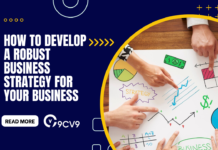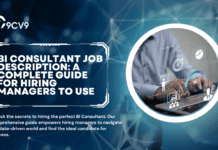Key Takeaways
- Skill development involves acquiring, enhancing, and applying technical and soft skills to improve performance and career growth.
- A structured process of assessment, learning, practical application, feedback, and continuous improvement ensures effective skill mastery.
- Investing in skill development benefits both individuals and organizations by boosting employability, productivity, adaptability, and long-term competitiveness.
In today’s fast-paced and ever-evolving professional landscape, the concept of skill development has emerged as a critical driver of both personal and organizational success. Skill development refers to the structured process of acquiring, enhancing, and refining abilities that enable individuals to perform tasks effectively, adapt to changing environments, and achieve specific career or personal objectives. Unlike traditional learning, which often focuses solely on knowledge acquisition, skill development emphasizes practical application, continuous improvement, and the strategic alignment of capabilities with evolving industry demands.

The importance of skill development has never been more pronounced. With technological advancements, automation, and the rise of AI transforming workplaces across all sectors, employees and professionals are increasingly required to possess a versatile skill set that combines technical expertise with soft skills such as communication, problem-solving, and leadership. Organizations, on the other hand, recognize that fostering skill development among their workforce is essential to maintaining competitiveness, driving innovation, and retaining top talent. Companies that invest in structured training programs, continuous learning opportunities, and career development initiatives often experience higher productivity, improved employee satisfaction, and greater adaptability to market shifts.
Skill development operates across multiple dimensions. It includes upskilling, which focuses on enhancing existing abilities to improve performance in current roles; reskilling, which equips individuals with entirely new competencies to transition into different positions or industries; and cross-skilling, which broadens expertise beyond one’s primary function to foster versatility and resilience. This multidimensional approach ensures that individuals are not only prepared for their current responsibilities but are also positioned to respond effectively to future challenges and opportunities.
The process of skill development is systematic and ongoing. It begins with assessing current competencies, identifying gaps, and setting clear, measurable objectives. Learning can take place through formal education, professional training programs, online courses, mentorship, or hands-on experiences. However, acquiring knowledge alone is insufficient. True skill development requires practical application, consistent practice, and the willingness to seek and incorporate feedback. By embracing this cycle of learning, application, and refinement, individuals cultivate expertise that is both deep and adaptable.
Beyond professional advantages, skill development contributes significantly to personal growth and fulfillment. It enhances confidence, encourages independent problem-solving, and fosters a mindset oriented toward continuous learning and improvement. For individuals, this translates into greater employability, career advancement, and the ability to navigate dynamic job markets. For organizations, it results in a more capable, agile, and innovative workforce.
In essence, skill development is no longer optional; it is a strategic necessity. It is the bridge between potential and performance, enabling individuals to unlock new opportunities while helping organizations achieve sustainable growth. Understanding what skill development entails and how it works is the first step toward leveraging its benefits, equipping both individuals and businesses to thrive in an increasingly competitive and technology-driven world.
Before we venture further into this article, we would like to share who we are and what we do.
About 9cv9
9cv9 is a business tech startup based in Singapore and Asia, with a strong presence all over the world.
With over nine years of startup and business experience, and being highly involved in connecting with thousands of companies and startups, the 9cv9 team has listed some important learning points in this overview of What is Skill Development and How Does It Work.
If you are looking for a job or an internship, click over to use the 9cv9 Job Portal to find your next top job and internship now.
Email [email protected] now for career and job finding services.
Or hope over to 9cv9 Job Placement Services for Professionals to learn how to get hired and find a high-paying job.
What is Skill Development and How Does It Work
- Understanding Skill Development
- The Skill Development Process
- Benefits of Skill Development
- Implementing Skill Development Strategies
1. Understanding Skill Development
Skill development refers to the structured process of acquiring, improving, and refining competencies that enable individuals to perform tasks effectively and adapt to evolving personal, professional, and organizational requirements. Unlike knowledge acquisition alone, skill development emphasizes practical application, measurable growth, and alignment with both current and future industry demands. It encompasses a wide spectrum of abilities, including technical expertise, interpersonal capabilities, cognitive skills, and emotional intelligence.
For example, a software engineer may develop coding proficiency in multiple programming languages, while simultaneously enhancing project management and collaboration skills. Similarly, a marketing professional might combine analytical skills for data-driven campaigns with creative problem-solving abilities to innovate new strategies.
Types of Skill Development
Upskilling
- Focuses on improving existing competencies to enhance performance in current roles.
- Example: A digital marketer learning advanced search engine optimization (SEO) techniques to increase campaign effectiveness.
- Benefit: Immediate productivity improvements and greater proficiency in existing responsibilities.
Reskilling
- Involves acquiring entirely new skills to transition into different roles or industries.
- Example: A factory machine operator learning data analytics to move into production management or industrial automation roles.
- Benefit: Enables career mobility and resilience in rapidly changing job markets.
Cross-Skilling
- Entails learning skills outside one’s primary domain to enhance versatility and adaptability.
- Example: An HR professional gaining knowledge in data visualization or basic coding to support recruitment analytics.
- Benefit: Increases employability and flexibility, allowing individuals to contribute across multiple functions.
Skill Development Framework
Assessment and Goal Setting
- Conduct a skills inventory to evaluate current competencies, strengths, and areas requiring improvement.
- Define specific, measurable, achievable, relevant, and time-bound (SMART) goals to guide development initiatives.
Learning and Practice
- Utilize multiple learning channels such as formal education, online courses, workshops, mentorship programs, and on-the-job training.
- Implement deliberate practice, focusing on tasks that challenge current abilities and promote mastery over time.
Application and Feedback
- Apply newly acquired skills in real-world scenarios to reinforce learning and contextual understanding.
- Seek constructive feedback from peers, mentors, or supervisors to refine techniques and approaches.
Continuous Improvement
- Encourage lifelong learning through ongoing skill enhancement and adaptation to emerging technologies or industry trends.
- Stay updated on sector-specific advancements to ensure competencies remain relevant and competitive.
Skill Development Matrix
| Skill Type | Focus Area | Learning Approach | Example Roles | Benefit |
|---|---|---|---|---|
| Technical Skills | Task-specific expertise | Online courses, certifications, labs | Software Engineer, Data Analyst | Enhanced performance, career growth |
| Soft Skills | Communication, leadership | Workshops, mentorship, feedback | Managers, Customer Support | Improved collaboration, influence |
| Cognitive Skills | Critical thinking, analysis | Problem-solving tasks, simulations | Analysts, Project Managers | Better decision-making, adaptability |
| Cross-Functional | Multi-domain knowledge | Job rotation, cross-training | HR, Marketing, Operations | Versatility, broader impact |
Skill Development Examples
- A multinational company implements a digital learning platform that provides employees with tailored courses in AI, data analytics, and leadership skills, resulting in a measurable 30% increase in productivity.
- A healthcare organization reskills nurses in telemedicine technologies, enabling them to provide virtual consultations effectively, meeting patient demand and expanding service reach.
Chart: Skill Development Cycle
[Visual representation: circular diagram showing “Assessment → Learning → Application → Feedback → Continuous Improvement → Assessment”]
This understanding establishes skill development as a deliberate, strategic process that combines assessment, targeted learning, practical application, and ongoing refinement. By structuring skill development in this way, individuals and organizations can achieve measurable growth, enhanced adaptability, and sustained success in competitive environments.
2. The Skill Development Process
Assessment and Goal Setting
- Skills Inventory and Gap Analysis
Conducting a thorough evaluation of current competencies is the foundational step in the skill development process. This involves identifying strengths, weaknesses, and areas where new skills are required to meet professional or personal objectives. Organizations often utilize assessment tools, performance reviews, and self-evaluation surveys to gather this information. Example: A software development team conducts a skill audit to determine proficiency levels in emerging technologies such as machine learning and cloud computing. This helps the organization identify areas for targeted training. - SMART Goal Setting
Establishing specific, measurable, achievable, relevant, and time-bound goals ensures that skill development initiatives are structured and result-oriented. Clear objectives guide both learners and mentors in tracking progress and evaluating success. Example: A project manager may set a goal to improve Agile project management skills within six months by completing a certified course and leading at least two Agile projects.
Learning and Practice
- Learning Methods
Skill acquisition can be achieved through multiple channels:- Formal Education: Degree programs, diplomas, and certification courses.
- Online Learning Platforms: MOOCs, webinars, and industry-specific courses.
- Workshops and Bootcamps: Intensive, hands-on sessions for practical experience.
- On-the-Job Training: Applying new techniques and tools in the workplace.
- Mentorship and Coaching: Guidance from experienced professionals to accelerate learning.
- Deliberate Practice
Practice is not merely repetition; it involves challenging current skill levels with targeted tasks and scenarios that foster growth. Feedback loops are essential in refining technique and achieving mastery. Example: A graphic designer practices advanced animation techniques by creating real project prototypes, analyzing performance, and incorporating feedback from senior designers.
Application and Feedback
- Practical Implementation
Applying acquired skills in real-world scenarios solidifies learning and contextual understanding. Hands-on application transforms theoretical knowledge into actionable expertise. Example: A financial analyst trained in predictive analytics applies these techniques to forecast quarterly revenue trends, gaining practical insights into model performance and limitations. - Constructive Feedback
Regular feedback from supervisors, peers, or mentors helps learners identify blind spots and refine their approaches. It ensures that skill development is aligned with both personal objectives and organizational requirements. Example: A customer service representative improving conflict resolution skills receives role-play feedback sessions from a manager, enhancing communication effectiveness with clients.
Continuous Improvement
- Lifelong Learning
Skill development is an ongoing process rather than a one-time effort. Continuous learning ensures adaptability to changing market demands, technological advancements, and career transitions. Example: An IT professional consistently updates knowledge in cybersecurity trends to remain proficient in protecting enterprise networks. - Monitoring and Updating Skills
Regularly revisiting skill assessments and adjusting development plans ensures relevance and prevents skill obsolescence. Industry certifications, refresher courses, and emerging technologies are key tools in continuous improvement. Example: A healthcare worker updates clinical skills annually through workshops and new medical technology training to ensure patient safety and compliance.
Skill Development Process Matrix
| Stage | Key Activities | Learning Approach | Example Application | Outcome |
|---|---|---|---|---|
| Assessment | Skills inventory, gap analysis | Self-evaluation, performance reviews | Identifying technical and soft skill gaps | Clear understanding of development needs |
| Goal Setting | SMART goals, roadmap creation | Mentorship, planning tools | Setting target milestones for skill mastery | Structured and measurable development plan |
| Learning & Practice | Courses, workshops, on-the-job training | Online learning, simulations, practice | Learning new coding languages or analytics | Enhanced knowledge and hands-on experience |
| Application & Feedback | Real-world projects, feedback loops | Mentorship, performance review sessions | Applying project management methods | Practical expertise and refined skills |
| Continuous Improvement | Lifelong learning, skill updating | Refresher courses, certifications | Staying updated on industry trends | Sustained adaptability and competitive edge |
Skill Development Cycle Chart
[Visual representation: circular flow diagram showing “Assessment → Goal Setting → Learning & Practice → Application & Feedback → Continuous Improvement → Assessment”]
By following this structured process, individuals and organizations can ensure that skill development is not arbitrary but strategic, measurable, and aligned with both personal growth objectives and market demands. The integration of assessment, structured learning, practical application, feedback, and continuous improvement creates a robust framework for building sustainable expertise and enhancing overall performance.
3. Benefits of Skill Development
Enhanced Employability
- Increased Job Opportunities
Skill development significantly improves employability by equipping individuals with the knowledge, technical abilities, and soft skills required by employers. Workers who continually update their skills are more likely to secure higher-level positions or transition into new roles that offer better career prospects. Example: A data analyst who learns advanced machine learning techniques and business intelligence tools becomes eligible for senior analytics roles that require predictive modeling expertise. - Competitive Advantage
Professionals who invest in skill development gain a competitive edge over peers in the job market. Mastery of niche skills or emerging technologies can differentiate a candidate and make them highly sought-after by employers. Example: A cybersecurity professional certified in ethical hacking and cloud security tools is more competitive than those with only basic IT knowledge.
Improved Performance and Productivity
- Efficiency in Task Execution
Developing relevant skills allows individuals to perform tasks more efficiently and accurately, reducing errors and optimizing output. This leads to measurable improvements in overall productivity for both individuals and organizations. Example: An accountant trained in automated financial reporting software can complete month-end reports in a fraction of the time compared to traditional manual processes. - Enhanced Problem-Solving Abilities
Skill development encourages critical thinking, creative problem-solving, and decision-making capabilities. Professionals are better prepared to tackle complex challenges with innovative solutions. Example: An operations manager trained in Lean Six Sigma methodology can identify inefficiencies in production processes and implement strategies that reduce waste and improve output quality.
Adaptability to Change
- Navigating Technological Advancements
Continuous skill development equips individuals to adapt to evolving technologies, market trends, and industry disruptions. This flexibility ensures career resilience and ongoing relevance in the workforce. Example: A retail manager learning e-commerce management and digital marketing adapts to the rise of online shopping and contributes to the company’s digital growth strategy. - Organizational Agility
Companies that prioritize employee skill development cultivate a workforce capable of adjusting quickly to changes, thereby maintaining competitiveness in dynamic markets. Example: A software development firm invests in cross-training teams in multiple programming languages, enabling rapid adaptation to client demands for diverse technology stacks.
Personal Satisfaction and Professional Growth
- Increased Confidence and Motivation
Acquiring and mastering new skills fosters a sense of accomplishment, self-efficacy, and confidence. Professionals are motivated to pursue new challenges and responsibilities. Example: A public relations professional who develops advanced media analytics skills gains confidence in delivering strategic recommendations to clients, enhancing professional credibility. - Career Advancement Opportunities
Skill development directly contributes to career progression by positioning individuals for promotions, leadership roles, and higher compensation. Example: An HR specialist trained in talent analytics and strategic workforce planning may advance to a senior HR business partner or director role within the organization.
Skill Development Benefits Matrix
| Benefit Category | Key Advantages | Example Application | Measurable Outcome |
|---|---|---|---|
| Employability | Job security, market competitiveness | Data analyst mastering machine learning | Eligibility for senior analytics roles |
| Performance & Productivity | Efficiency, accuracy, problem-solving | Accountant using automated reporting tools | Reduced reporting time by 40% |
| Adaptability | Flexibility, industry readiness | Retail manager trained in e-commerce strategies | Smooth transition to digital business models |
| Personal Growth | Confidence, motivation, career growth | PR professional with media analytics expertise | Increased client trust and professional credibility |
Chart: Impact of Skill Development
[Visual representation: bar chart showing improvement percentages in employability, productivity, adaptability, and personal growth after structured skill development initiatives]
Long-Term Organizational Benefits
- Talent Retention
Organizations that invest in employee skill development experience higher retention rates, as employees value opportunities for growth and career advancement. Example: A multinational company offering leadership and technical development programs retains 25% more high-performing employees compared to companies without structured training. - Innovation and Competitiveness
A skilled workforce drives innovation by applying new techniques, exploring creative solutions, and responding to market shifts proactively. Example: A technology startup encourages employees to learn emerging AI tools, resulting in innovative product features and accelerated market adoption. - Cost Efficiency
By developing internal talent, organizations reduce dependency on external hiring for specialized skills, saving recruitment costs and onboarding time. Example: A manufacturing company trains existing technicians in robotic automation, eliminating the need to hire additional specialists.
In summary, skill development provides multifaceted benefits that extend beyond individual career growth. It enhances employability, boosts performance and productivity, fosters adaptability, and contributes to personal satisfaction. For organizations, it ensures a competent, agile, and innovative workforce, ultimately strengthening market position and driving long-term success.
4. Implementing Skill Development Strategies
For Individuals
- Identifying Skill Gaps
The first step for individuals in implementing effective skill development is to assess current competencies and identify gaps. This involves self-evaluation, performance feedback, and understanding industry requirements to determine which skills are most critical for growth. Example: A digital marketing professional identifies gaps in advanced analytics and AI-driven campaign optimization after reviewing industry trends and employer expectations. - Creating a Personal Learning Plan
After identifying gaps, individuals should develop a structured learning plan with clear objectives, timelines, and milestones. Setting SMART (Specific, Measurable, Achievable, Relevant, Time-bound) goals ensures progress is measurable and consistent. Example: A project manager sets a goal to gain certification in Agile Scrum within six months, dedicating two hours daily to online coursework and practical project exercises. - Leveraging Diverse Learning Resources
Individuals can access multiple learning resources to acquire skills:- Online platforms offering courses, webinars, and tutorials.
- Workshops and bootcamps providing hands-on experience.
- Mentorship and peer collaboration for guidance and feedback.
- Industry conferences and networking events to stay updated on emerging trends.
- Practical Application and Feedback
Applying newly acquired skills in real-world scenarios accelerates learning and ensures mastery. Seeking constructive feedback from peers or mentors helps refine techniques and build confidence. Example: An HR professional trained in talent analytics applies insights to recruitment processes, receiving feedback from senior managers to enhance predictive hiring accuracy.
For Organizations
- Establishing a Learning Culture
Companies should foster a culture that values continuous learning and encourages employees to develop skills. This includes promoting knowledge sharing, recognizing achievements, and integrating development into performance evaluations. Example: A multinational technology firm integrates learning milestones into annual performance reviews, motivating employees to participate in skill development programs. - Providing Structured Training Programs
Organizations should offer targeted training programs that address current skill gaps and prepare employees for future industry demands. This includes technical training, leadership development, and soft skills enhancement. Example: A financial services company provides employees with training in AI-powered risk assessment tools to enhance analytical capabilities. - Encouraging Cross-Functional Learning
Cross-skilling allows employees to gain expertise outside their primary domain, improving adaptability and collaboration across teams. Example: A product manager participates in coding workshops to better understand software development, enabling more effective communication with engineering teams. - Tracking and Measuring Progress
Monitoring employee skill development ensures training initiatives deliver measurable outcomes. Metrics such as course completion rates, project performance, and certification achievements help organizations assess effectiveness. Example: A consulting firm uses a skills dashboard to track employee training progress, aligning development efforts with project requirements and career goals.
Skill Development Strategy Matrix
| Strategy Component | Individual Focus | Organizational Focus | Example Implementation | Outcome |
|---|---|---|---|---|
| Skill Gap Assessment | Self-evaluation, feedback | Performance reviews, skills audits | Identify gaps in digital marketing analytics | Targeted skill development |
| Learning Plan | SMART goals, structured timeline | Training roadmap, learning milestones | Certification programs, workshops | Measurable skill acquisition |
| Learning Resources | Online courses, mentorship, events | In-house training, external programs | Cloud architecture training for IT teams | Practical, up-to-date skill enhancement |
| Application & Feedback | Real-world projects, practice | Pilot projects, mentorship programs | Applying AI tools to analytics projects | Accelerated learning, improved performance |
| Continuous Monitoring | Progress tracking, self-assessment | Skills dashboards, KPIs | Tracking course completion and certifications | Optimized and adaptive skill development |
Chart: Individual vs. Organizational Skill Development Alignment
[Visual representation: dual-line chart showing growth in individual skill proficiency alongside organizational capability enhancement over time through structured training programs]
Integrating Technology into Skill Development
- Learning Management Systems (LMS)
LMS platforms streamline training delivery, track employee progress, and provide analytics for targeted development. They enable organizations to offer scalable, flexible learning opportunities. Example: A multinational company uses an LMS to deliver personalized e-learning paths for employees in leadership, technical skills, and compliance training. - AI-Powered Personalized Learning
Artificial intelligence can recommend courses, provide adaptive learning experiences, and predict skill gaps based on employee performance data. Example: An AI-driven platform suggests specific coding modules to software developers based on their project performance, accelerating mastery in critical areas. - Gamification and Interactive Tools
Gamified learning modules increase engagement, motivation, and knowledge retention by incorporating challenges, rewards, and interactive exercises. Example: A retail company uses gamified customer service training to improve employee engagement and measure skill application through interactive simulations.
By implementing structured strategies that combine assessment, targeted learning, practical application, feedback, continuous monitoring, and technology integration, both individuals and organizations can maximize the effectiveness of skill development initiatives. These strategies ensure measurable growth, enhance workforce adaptability, and strengthen long-term competitiveness.
Conclusion
Skill development has become an essential pillar for personal growth, professional advancement, and organizational success in today’s fast-evolving global economy. It encompasses the structured process of acquiring, enhancing, and refining both technical and soft skills that are crucial for performing effectively, adapting to changing environments, and achieving long-term career objectives. Unlike passive knowledge acquisition, skill development emphasizes practical application, continuous improvement, and alignment with current and emerging industry demands, making it a strategic necessity for individuals and businesses alike.
The process of skill development is systematic and multifaceted, beginning with a thorough assessment of existing competencies and identification of skill gaps. Goal setting, guided by SMART principles, provides a clear roadmap for development, while diverse learning methods—including formal education, online courses, workshops, mentorship, and on-the-job training—enable individuals to acquire and practice new skills effectively. Applying these skills in real-world scenarios, coupled with continuous feedback, reinforces learning and fosters mastery. Continuous improvement ensures that skills remain relevant, adaptable, and aligned with evolving market trends, technological advancements, and organizational needs.
The benefits of skill development extend far beyond individual performance. For professionals, it enhances employability, increases job opportunities, boosts confidence, and enables career progression. It equips individuals with the ability to navigate complex challenges, embrace change, and remain competitive in rapidly shifting job markets. For organizations, investing in skill development drives productivity, innovation, and adaptability while fostering a culture of learning and employee engagement. Companies that prioritize employee development are better positioned to retain top talent, reduce recruitment costs, and maintain a competitive advantage in their respective industries.
Implementing effective skill development strategies requires a coordinated effort from both individuals and organizations. Individuals must identify skill gaps, create structured learning plans, leverage diverse learning resources, and apply new skills in practical contexts. Organizations, on the other hand, should foster a learning culture, provide structured training programs, encourage cross-functional learning, and continuously monitor skill development progress through measurable metrics. Integrating technology—such as learning management systems, AI-driven personalized learning, and gamification—further enhances the accessibility, efficiency, and impact of development initiatives.
In essence, skill development is a strategic investment in future capabilities. It is the bridge that connects potential to performance, enabling individuals to unlock career opportunities and organizations to cultivate a competent, agile, and innovative workforce. By understanding what skill development entails and adopting a structured, continuous, and technology-enabled approach, professionals and businesses alike can thrive in competitive, dynamic, and technology-driven environments.
For individuals seeking growth, the next step is to assess current skills, set clear development goals, and actively pursue targeted learning opportunities. For organizations, the imperative is to implement comprehensive skill development strategies that empower employees, drive innovation, and ensure long-term success. Skill development is not a one-time effort; it is a continuous journey that shapes careers, enhances performance, and builds sustainable competitiveness in an ever-changing world.
This comprehensive understanding of skill development highlights its critical role as a catalyst for success, providing both individuals and organizations with the tools, strategies, and mindset necessary to excel in the modern professional landscape.
If you find this article useful, why not share it with your hiring manager and C-level suite friends and also leave a nice comment below?
We, at the 9cv9 Research Team, strive to bring the latest and most meaningful data, guides, and statistics to your doorstep.
To get access to top-quality guides, click over to 9cv9 Blog.
To hire top talents using our modern AI-powered recruitment agency, find out more at 9cv9 Modern AI-Powered Recruitment Agency.
People Also Ask
What is skill development?
Skill development is the process of acquiring, improving, and refining abilities to perform tasks effectively, adapt to change, and achieve personal and professional growth.
Why is skill development important?
It enhances employability, boosts productivity, improves adaptability, and supports career progression by equipping individuals with relevant technical and soft skills.
What are the types of skill development?
The main types include upskilling (enhancing current skills), reskilling (learning new skills for a different role), and cross-skilling (gaining complementary skills across domains).
How does skill development work?
It works through a structured process of assessing skills, setting goals, learning new abilities, applying them in practice, receiving feedback, and continuously improving.
What is upskilling?
Upskilling is improving existing skills to enhance performance in current roles, often through training, online courses, or workshops.
What is reskilling?
Reskilling involves learning entirely new skills to transition into different roles or industries, ensuring career flexibility and relevance.
What is cross-skilling?
Cross-skilling is acquiring skills outside your primary area to increase versatility, adaptability, and the ability to contribute across multiple functions.
How do I assess my skill gaps?
Evaluate your current abilities through self-assessment, feedback, performance reviews, and comparing your skills against industry standards or role requirements.
What are SMART goals in skill development?
SMART goals are Specific, Measurable, Achievable, Relevant, and Time-bound objectives that guide learning and ensure measurable progress.
What are effective learning methods for skill development?
Learning methods include online courses, workshops, mentorship, hands-on training, webinars, simulations, and professional certifications.
How can skill development improve employability?
It enhances your value to employers by equipping you with up-to-date knowledge, practical abilities, and versatile competencies relevant to your industry.
Can skill development increase productivity?
Yes, acquiring and mastering relevant skills allows individuals to perform tasks more efficiently, solve problems faster, and reduce errors.
How does feedback help in skill development?
Feedback identifies strengths and areas for improvement, helping individuals refine their techniques, apply skills effectively, and achieve mastery.
Why is continuous improvement essential in skill development?
Skills evolve over time; continuous improvement ensures individuals stay updated, adapt to changes, and maintain competitiveness in their field.
What role do organizations play in skill development?
Organizations can provide training, mentorship, learning resources, and a culture of continuous learning to enhance employee skills and workforce capability.
What is the difference between technical and soft skills?
Technical skills are task-specific abilities like coding or data analysis, while soft skills include communication, leadership, and problem-solving capabilities.
How can online courses help in skill development?
Online courses provide flexible, accessible, and structured learning paths that allow individuals to acquire new skills and certifications at their own pace.
What is the impact of skill development on career growth?
Developing new skills improves career prospects, opens opportunities for promotions, and enhances professional credibility and confidence.
How does skill development contribute to adaptability?
It equips individuals to adjust to technological changes, industry trends, and shifting job requirements, ensuring long-term relevance.
Can skill development improve personal satisfaction?
Yes, mastering new skills builds confidence, enhances self-efficacy, and fosters personal fulfillment and motivation.
How do companies track skill development progress?
Organizations use tools like learning management systems, skills dashboards, performance metrics, and feedback to monitor progress.
What is the difference between reskilling and upskilling?
Upskilling enhances current skills for better performance in the same role, while reskilling prepares individuals for entirely new roles or career paths.
How does mentorship support skill development?
Mentorship provides guidance, knowledge transfer, and practical insights from experienced professionals, accelerating learning and skill application.
Can skill development reduce job insecurity?
Yes, continuously updating and expanding skills makes individuals more employable and adaptable, reducing vulnerability to job market changes.
What is a skill development plan?
A skill development plan outlines targeted learning objectives, timelines, resources, and application strategies to guide structured skill growth.
How does skill development impact organizational growth?
A skilled workforce drives innovation, productivity, and competitiveness, contributing to overall organizational efficiency and market success.
Why is practical application important in skill development?
Applying skills in real-world scenarios reinforces learning, builds confidence, and ensures that abilities are actionable and relevant.
How can cross-skilling benefit employees?
Cross-skilling enhances versatility, improves collaboration, and allows employees to contribute across multiple departments or projects.
What are common tools for skill development tracking?
Tools include learning management systems, skill matrices, performance dashboards, and project-based evaluation metrics.
How long does skill development take?
The duration varies by skill complexity, learning methods, and individual commitment, but consistent practice and continuous learning are key to mastery.































![Writing A Good CV [6 Tips To Improve Your CV] 6 Tips To Improve Your CV](https://blog.9cv9.com/wp-content/uploads/2020/06/2020-06-02-2-100x70.png)


